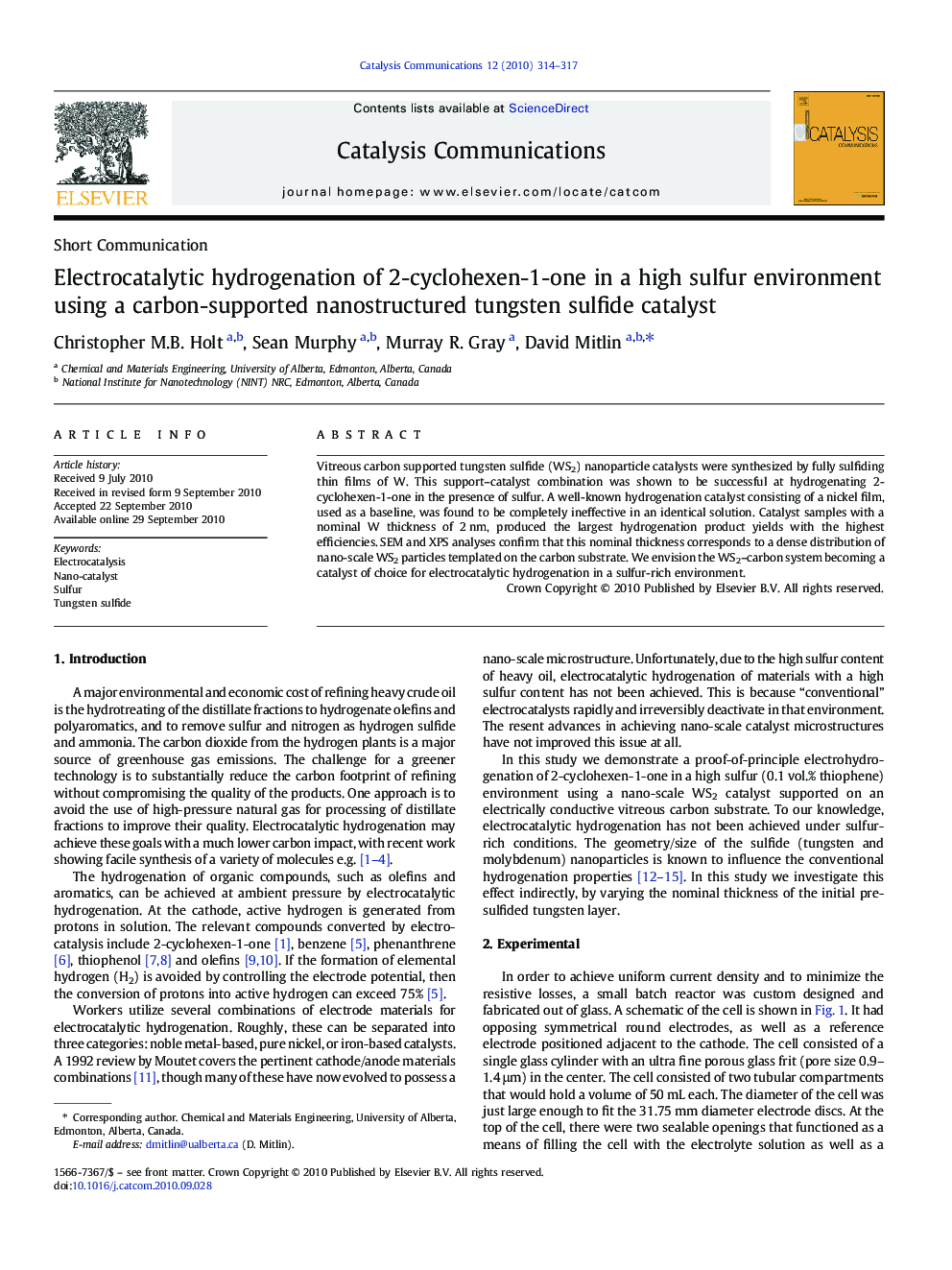| Article ID | Journal | Published Year | Pages | File Type |
|---|---|---|---|---|
| 50833 | Catalysis Communications | 2010 | 4 Pages |
Vitreous carbon supported tungsten sulfide (WS2) nanoparticle catalysts were synthesized by fully sulfiding thin films of W. This support–catalyst combination was shown to be successful at hydrogenating 2-cyclohexen-1-one in the presence of sulfur. A well-known hydrogenation catalyst consisting of a nickel film, used as a baseline, was found to be completely ineffective in an identical solution. Catalyst samples with a nominal W thickness of 2 nm, produced the largest hydrogenation product yields with the highest efficiencies. SEM and XPS analyses confirm that this nominal thickness corresponds to a dense distribution of nano-scale WS2 particles templated on the carbon substrate. We envision the WS2–carbon system becoming a catalyst of choice for electrocatalytic hydrogenation in a sulfur-rich environment.
Graphical abstractFigure optionsDownload full-size imageDownload as PowerPoint slideResearch Highlights►Vitreous-carbon supported WS2 nanoparticle catalysts were synthesized. ►This combination hydrogenated 2-cyclohexen-1-one in the presence of sulfur. ►This system may become the catalyst of choice for sulfur-rich applications.
